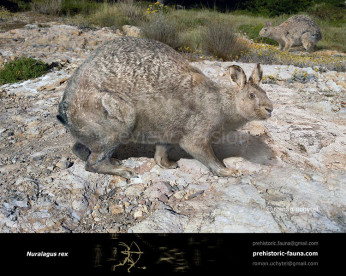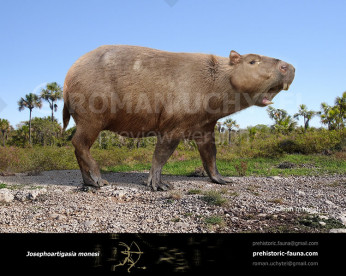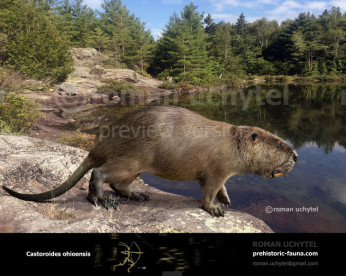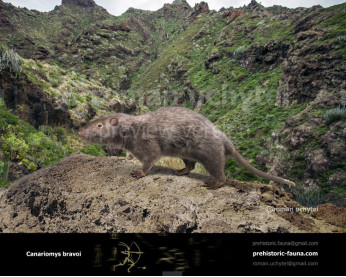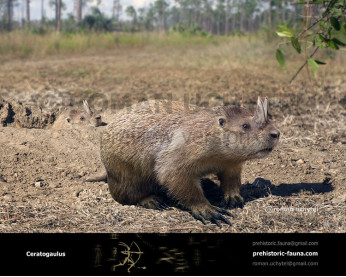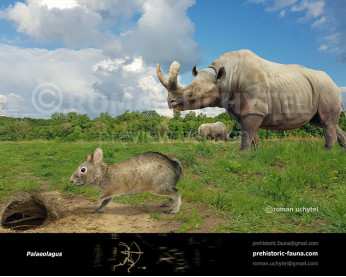Phoberomys
434434Phoberomys (Phoberomys pattersoni (Mones, 1980))
Order: Rodentia
Family: Dinomyidae
Time period: Late Miocene of South America (~9.0–6.8 million years ago)
Size: 2,5 - 3 m in length, 150 cm in height, 220 - 770 kg of weight
largest representative: Phoberomys insolita Kraglievich, 1940
Phoberomys pattersoni is an extinct rodent that lived in the ancient Orinoco River delta around 8 million years ago. It was the second-largest of the roughly seven species of its genus. Like many other rodents, Phoberomys was a herbivore with high-crowned premolars and molars.
An almost complete skeleton was discovered in the Urumaco Formation at Urumaco, Venezuela, in 2000. The new species was later classified with the name Phoberomys pattersoni in honor of palaeontologist Brian Patterson. From the fossil, researchers have been able to reconstruct its size and probable lifestyle. It was 3 m long, with a tail at 1.5 m), and probably weighed between 250 and 700 kg , making it for some years the largest known rodent for which good size and weight estimates were possible. Its congener Phoberomys insolita was a bit larger still, but it is not known from any reasonably complete remains, thus its size cannot be estimated more precisely.
In early 2008, the discovery of Josephoartigasia monesi was announced, which was even larger.
Phoberomys (Phoberomys pattersoni (Mones, 1980))
Order: Rodentia
Family: Dinomyidae
Time period: Late Miocene of South America (~9.0–6.8 million years ago)
Size: 2,5 - 3 m in length, 150 cm in height, 220 - 770 kg of weight
largest representative: Phoberomys insolita Kraglievich, 1940
Phoberomys pattersoni is an extinct rodent that lived in the ancient Orinoco River delta around 8 million years ago. It was the second-largest of the roughly seven species of its genus. Like many other rodents, Phoberomys was a herbivore with high-crowned premolars and molars.
An almost complete skeleton was discovered in the Urumaco Formation at Urumaco, Venezuela, in 2000. The new species was later classified with the name Phoberomys pattersoni in honor of palaeontologist Brian Patterson. From the fossil, researchers have been able to reconstruct its size and probable lifestyle. It was 3 m long, with a tail at 1.5 m), and probably weighed between 250 and 700 kg , making it for some years the largest known rodent for which good size and weight estimates were possible. Its congener Phoberomys insolita was a bit larger still, but it is not known from any reasonably complete remains, thus its size cannot be estimated more precisely.
In early 2008, the discovery of Josephoartigasia monesi was announced, which was even larger.

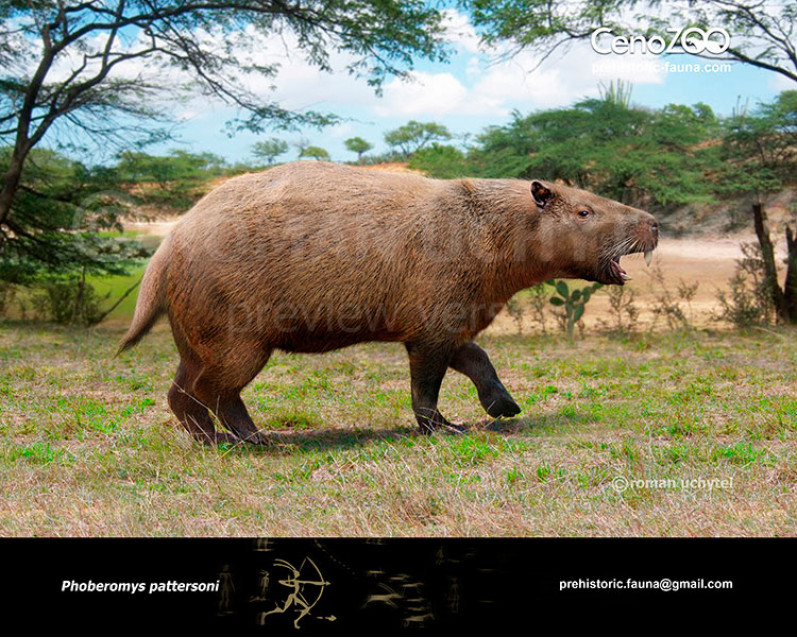
-797x638.jpg)

-70x56.jpg)
